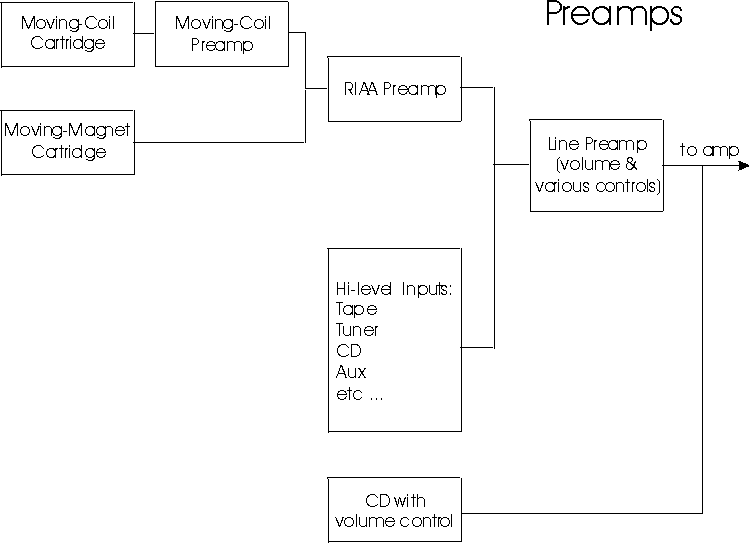
Back to home page
Back to audio electronics page
Of course many other variants exist but the following schematics are the most commonly found.

Indicative output levels:
- moving coils (MC), 0.2mV
- moving magnets (MM), 2mV
- high-level (tape, tuner, aux, ...), 0.1V
- CD, up to 2V
The usual input level of an amp is around 1V, CD players that have a variable output can be directly connected.

That's the most common configuration where the passive filter is included in the loudspeakers.
Pros:
- simple
- low cost
Cons:
- passive filter working under high power
- filter often included inside the loudspeaker and receiving very strong vibrations that
modify the electrical properties of its components
- loudspeakers are decoupled from the amp and not damped very well, especially the woofer
- ...

A much more sophisticated configuration but, of course, much more expensive as well, as
every speaker has its own amp.
Mixed configurations are also possible.
Pros:
- much better damping by direct cabling
- no component is working under strong power
- each amp can be optimized to the associated loudspeaker and frequency range to reproduce
- ...
Cons:
- cost
- set-up difficulties